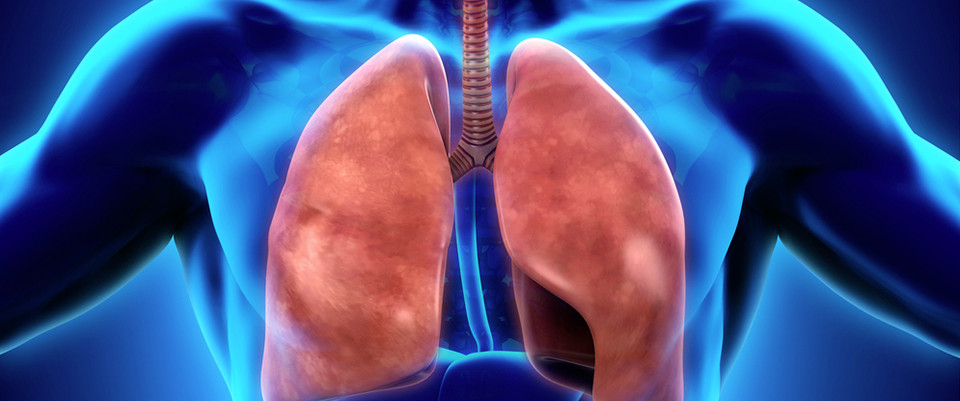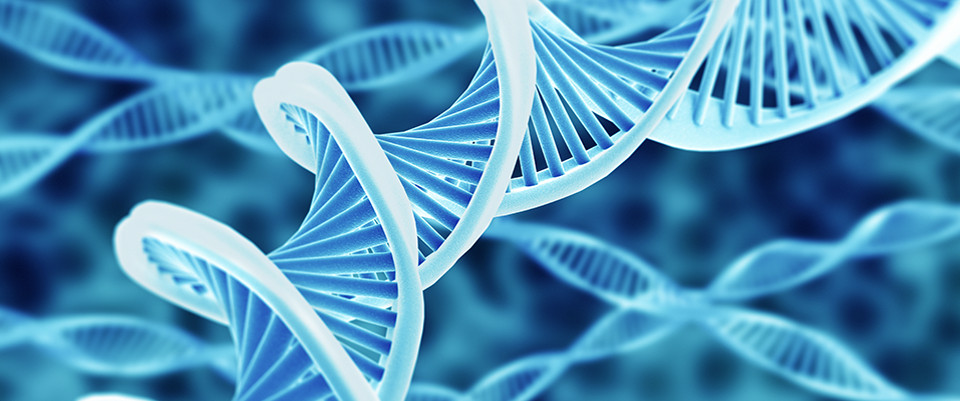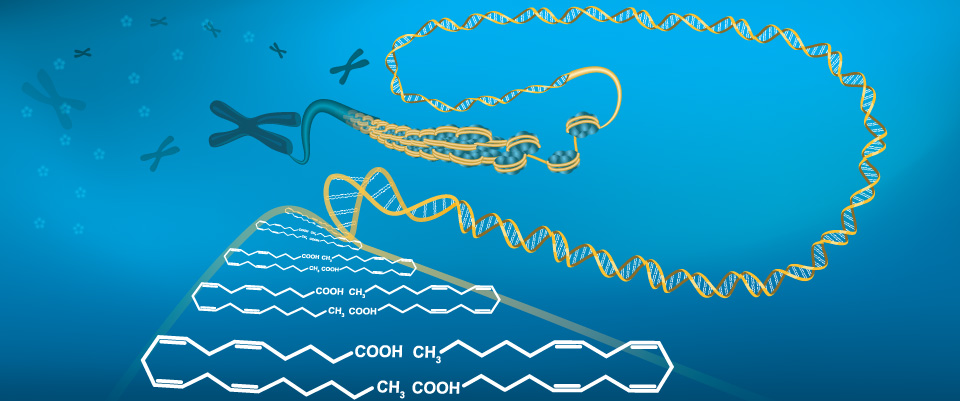PubMed
Plasma metabolomic profiles reveal sex- and maturation-dependent metabolic strategies in sea lamprey (Petromyzon marinus)
Metabolomics. 2022 Nov 8;18(11):90. doi: 10.1007/s11306-022-01951-2.ABSTRACTINTRODUCTION: Adult sea lamprey (Petromyzon marinus) cease feeding and migrate to spawning streams where males build nests, undergo final sexual maturation, and subsequently produce and release large quantities of bile acid pheromones that attract mature females. These animals are predicted to rearrange their metabolic pathways drastically to support their reproductive strategies, presenting advantageous opportunities to examine how sex and the maturation processes affect metabolism.OBJECTIVES: The objective is to investigate the metabolic differences between sexes and maturation states in sea lamprey that support changes in physiological functions.METHODS: We compared plasma metabolomes of spawning and prespawning sea lamprey in both sexes using both non-targeted and targeted metabolomics approaches using UPLC/MS-MS with electrospray ionization in both positive and negative modes. The data were processed using Progenesis QI, Compound Discoverer and XCMS softwares for alignment, peak picking, and deconvolution of the peaks. Principle component analyses (PCA) and partial least squares discriminant analyses (PLS-DA) were performed using SIMCA and Metaboanalyst softwares to identify discriminating features, followed by fragmentation matching with extensive database search and pathway mapping.RESULTS: The pheromonal bile acid biosynthesis was upregulated significantly in males compared to females. Spermiating males further upregulated bile acid biosynthesis by altering amino acid metabolisms, upregulating cofactors and nucleotide metabolisms, but downregulating carbohydrate and energy metabolisms.CONCLUSION: Plasma metabolomes are sex- and maturation-dependent and reflect the special metabolic demands at each life stage and reproductive strategy.PMID:36346466 | DOI:10.1007/s11306-022-01951-2
Understanding the Link between Sleep and Health using Metabolomics
Sleep. 2022 Nov 8:zsac268. doi: 10.1093/sleep/zsac268. Online ahead of print.NO ABSTRACTPMID:36346440 | DOI:10.1093/sleep/zsac268
Machine Learning Analysis of the Cerebrovascular Thrombi Lipidome in Acute Ischemic Stroke
J Neurosci Nurs. 2022 Nov 8. doi: 10.1097/JNN.0000000000000682. Online ahead of print.ABSTRACTOBJECTIVE: The aim of this study was to identify a signature lipid profile from cerebral thrombi in acute ischemic stroke (AIS) patients at the time of ictus. METHODS: We performed untargeted lipidomics analysis using liquid chromatography-mass spectrometry on cerebral thrombi taken from a nonprobability, convenience sampling of adult subjects (≥18 years old, n = 5) who underwent thrombectomy for acute cerebrovascular occlusion. The data were classified using random forest, a machine learning algorithm. RESULTS: The top 10 metabolites identified from the random forest analysis were of the glycerophospholipid species and fatty acids. CONCLUSION: Preliminary analysis demonstrates feasibility of identification of lipid metabolomic profiling in cerebral thrombi retrieved from AIS patients. Recent advances in omic methodologies enable lipidomic profiling, which may provide insight into the cellular metabolic pathophysiology caused by AIS. Understanding of lipidomic changes in AIS may illuminate specific metabolite and lipid pathways involved and further the potential to develop personalized preventive strategies.PMID:36346351 | DOI:10.1097/JNN.0000000000000682
Validation of a New Salt-Assisted HS-GC-FID Method for the Determination of Ethanol in Vitreous Humor
J Anal Toxicol. 2022 Nov 8:bkac087. doi: 10.1093/jat/bkac087. Online ahead of print.ABSTRACTHeadspace gas chromatography with a flame ionization detector (HS-GC-FID) is a well-established approach for determining blood alcohol concentration (BAC), including in cadaveric specimens. Although the integrity of blood specimens can be adequately guaranteed after the sampling, the quantification of ethanol in cadaveric blood can be affected by postmortem fermentative phenomena occurring between the time since death and the sampling of biofluids. Vitreous humor is less affected by putrefactive phenomena allowing compound determination and its use as an alternative biological matrix. The present work aimed to develop and validate a method using the salting-out effect and based on HS-GC-FID for the ethanol determination in vitreous humor. The reported analytical method is based on a simple VH pre-treatment consisting of a dilution (1:9) with a solution of 2.5 mol/L K2CO3 and 0.0012 mol/L tert-butanol (internal standard). After 1 minute of incubation, part of the specimen evaporated in the headspace (2000 µL) is injected into the chromatographic system and analyzed in isothermal mode (40°C), with a chromatographic time of 1.6 minutes. The method was validated in terms of selectivity, lowest limit of detection, intraday and total imprecision, and trueness (bias). The determination of ethanol in vitreous humor and blood was carried out in 75 cases. The correlation between the two matrices was confirmed in 61 cases. However, 14 vitreous humor specimens showed lower ethanol concentrations, and in the related blood specimens, it was possible to identify the signal of n-propanol, a typical product of postmortem microbial fermentation, that justifies the excess of ethanol in the blood specimens.PMID:36346343 | DOI:10.1093/jat/bkac087
Glutathione and neodiosmin feedback sustain plant immunity
J Exp Bot. 2022 Nov 8:erac442. doi: 10.1093/jxb/erac442. Online ahead of print.ABSTRACTPlants have evolved a two-layer immune system comprising pattern-triggered immunity (PTI) and effector-triggered immunity (ETI) that is activated in response to pathogen invasion. Microbial patterns and pathogen effectors can be recognized by surface-localized pattern-recognition receptors (PRRs) and intracellularly localized nucleotide-binding leucine-rich repeat receptors (NLRs) to trigger PTI and ETI responses, respectively. At present, the metabolites activated by PTI and ETI and their roles and signaling pathways in plant immunity are not well understood. In this study, metabolomic analysis showed that ETI and PTI induced various flavonoids and amino acids and their derivatives to accumulate in plants. Interestingly, the contents of glutathione and neodiosmin were specifically upregulated by ETI and PTI, respectively, which significantly enhanced plant immunity. Further studies showed that glutathione and neodiosmin failed to induce a plant immune response in which PRRs/coreceptors were mutated. In addition, glutathione-reduced mutant gsh1 analysis showed that GSH1 is also required for PTI and ETI. Finally, we propose a possible model in which glutathione and neodiosmin are considered signature metabolites induced in the process of ETI and PTI activation in plants and further continuous enhancement of plant immunity in which PRRs/coreceptors are needed. This model is beneficial for the in-depth understanding of the closed-loop mode of the positive feedback regulation of PTI and ETI signals at the metabolic level.PMID:36346205 | DOI:10.1093/jxb/erac442
The Effect of Night Shifts on 24-h Rhythms in the Urinary Metabolome of Police Officers on a Rotating Work Schedule
J Biol Rhythms. 2022 Nov 8:7487304221132088. doi: 10.1177/07487304221132088. Online ahead of print.ABSTRACTShift workers face an increased risk of metabolic health problems, but the direct metabolic response to working nights is not fully understood. The aim of this study was to investigate the effect of night shifts on the 24-h urinary metabolome of shift workers. Eleven police officers working rotating shifts completed two 24-h laboratory visits that took place before and after they worked 7 consecutive nights. Sleep and meals were scheduled on a day schedule in the first visit and then on a night schedule (i.e., sleep and meals shifted by approximately 12 h) in the second visit. Targeted metabolomic analysis was performed on urine samples collected throughout these laboratory visits. Differential rhythmicity analysis was used to compare 24-h rhythms in urinary metabolites in both conditions. Our results show that on the day schedule, 24-h rhythms are present in the urinary levels of the majority of metabolites, but that this is significantly reduced on the night schedule, partly due to loss of organic acid rhythmicity. Furthermore, misalignment of 24-h metabolite rhythms with the shifted behavioral cycles in the night schedule was observed in more than half of the metabolites that were rhythmic in both conditions (all acylcarnitines). These results show that working nights alters the daily rhythms of the urinary metabolome in rotating shift workers, with the most notable impact observed for acylcarnitines and organic acids, 2 metabolite classes involved in mitochondrial function. Further research is warranted to study how these changes relate to the increased metabolic risks associated with shift work.PMID:36346168 | DOI:10.1177/07487304221132088
Sub-lethal Exposure of Per- and Polyfluoroalkyl Substances (PFAS) of Varying Chain Length and Polar Functionality Results in Distinct Metabolic Responses in Daphnia magna
Environ Toxicol Chem. 2022 Nov 8. doi: 10.1002/etc.5517. Online ahead of print.ABSTRACTPer- and polyfluoroalkyl substances (PFAS) are a class of persistent organic pollutants used in industrial applications due to their physicochemical properties that results in their ubiquitous presence across environmental matrices. To date, legacy PFAS have been well-studied, however, the concentration of alternative PFAS may exceed the concentration of legacy pollutants and more information is needed regarding the sub-lethal toxicity at the molecular-level of aquatic model organisms, such as Daphnia magna. Perfluorobutanoic acid (PFBA), perfluorohexanoic acid (PFHxA), perfluorohexanesulfonic acid (PFHxS), and perfluorononanoic acid (PFNA), are four widely detected PFAS alternatives of varying chain length and polar functionality that are quantified in aquatic environments. This study examines the metabolic perturbations of PFAS with varying chemistries to D. magna using targeted mass spectrometry -based metabolomics. Daphnia were acutely exposed to sub-lethal concentrations of PFBA, PFHxA, PFHxS, and PFNA before the polar metabolite profile was extracted from single organisms. Multivariate analysis demonstrated significant separation between the sub-lethal concentrations of PFHxA, PFHxS, and PFNA relative to the controls; in sum, longer chain lengths demonstrated greater overall perturbations to the extracted metabolic profiles. Univariate statistics revealed significant perturbations in the concentrations of several amino acids, nucleotides/nucleosides, and neurotransmitters with exposure to PFAS. These metabolic perturbations are consistent with disruptions in energy metabolism (pantothenate and Coenzyme A metabolism, histidine metabolism) and protein synthesis (aminoacyl-tRNA biosynthesis and amino acid metabolism) which were identified through biochemical pathway analysis. These results provide evidence that while PFAS chemistry (chain length and polar functional group) invokes unique metabolic responses there is also an underlying toxic mode of action that is common with select PFAS exposure. Overall, this work highlights the capabilities of environmental metabolomics to elucidate the molecular-level perturbations of pollutants within the same chemical class to model aquatic organisms which can be used to prioritize risk assessment of substituted PFAS alternatives. This article is protected by copyright. All rights reserved. Environ Toxicol Chem 2022;00:0-0. © 2022 SETAC.PMID:36345965 | DOI:10.1002/etc.5517
Microbial and host factors contribute to bloodstream infection in a pediatric acute lymphocytic leukemia mouse model
Heliyon. 2022 Oct 29;8(11):e11340. doi: 10.1016/j.heliyon.2022.e11340. eCollection 2022 Nov.ABSTRACTBACKGROUND: Hematological malignancies are the most common cancers in the pediatric population, and T-cell acute lymphocytic leukemia (T-ALL) is the most common hematological malignancy in children. Bloodstream infection (BSI) is a commonly occurring complication in leukemia due to underlying conditions and therapy-induced neutropenia. Several studies identified the gut microbiome as a major source of BSI due to bacterial translocation. This study aimed to investigate changes in the intestinal and fecal microbiome, and their roles in the pathophysiology of BSI in a pediatric T-ALL mouse model using high-throughput shotgun metagenomics sequencing, and metabolomics.RESULTS: Our results show that BSI in ALL is characterized by an increase of a mucin degrading bacterium (Akkermansia muciniphila) and a decrease of butyrate producer Clostridia spp., along with a decrease in short-chain fatty acid (SCFA) concentrations and differential expression of tight junction proteins in the small intestine. Functional analysis of the small intestinal microbiome indicated a reduced capability of SCFA synthesis, while SCFA supplementation ameliorated the development of BSI in ALL.CONCLUSIONS: Our data indicates that changes in the microbiome, and the resulting changes in levels of SCFAs contribute significantly to the pathogenesis of bloodstream infection in ALL. Our study provides tailored preventive or therapeutic approaches to reduce BSI-associated mortality in ALL.PMID:36345525 | PMC:PMC9636473 | DOI:10.1016/j.heliyon.2022.e11340
Transcriptome and metabolome analyses of lignin biosynthesis mechanism of <em>Platycladus orientalis</em>
PeerJ. 2022 Nov 2;10:e14172. doi: 10.7717/peerj.14172. eCollection 2022.ABSTRACTBACKGROUND: Platycladus orientalis, as an important plant for ecological protection, is a pioneer tree species for afforestation in arid and barren mountainous areas. Lignin has the functions of water and soil conservation, strengthening plant mechanical strength and resisting adverse environmental effects and plays an important role in the ecological protection benefits of P. orientalis.METHODS: In this study, annual dynamic observations of the lignin content in roots, stems and leaves of one-year-old seedlings of a P. orientalis half-sib family were carried out, and combined transcriptome and metabolome analyses were carried out during three key stages of P. orientalis stem development.RESULTS: The lignin contents in roots, stems and leaves of P. orientalis showed extremely significant spatiotemporal differences. In the stems, lignin was mainly distributed in the cell walls of the pith, xylem, phloem, pericyte, and epidermis, with differences in different periods. A total of 226 metabolites were detected in the stem of P. orientalis, which were divided into seven categories, including 10 synthetic precursor compounds containing lignin. Among them, the content of coniferyl alcohol was the highest, accounting for 12.27% of the total content, and caffeyl alcohol was the lowest, accounting for 7.05% only. By annotating the KEGG functions, a large number of differentially expressed genes and differential metabolites were obtained for the comparison combinations, and seven key enzymes and 24 related genes involved in the process of lignin synthesis in P. orientalis were selected.CONCLUSIONS: Based on the results of the metabolic mechanism of lignin in P. orientalis by biochemical, anatomical and molecular biological analyzes, the key regulatory pathways of lignin in P. orientalis were identified, which will be of great significance for regulating the lignin content of P. orientalis and improving the adaptability and resistance of this plant.PMID:36345485 | PMC:PMC9636869 | DOI:10.7717/peerj.14172
A narrative review of metabolomics in the era of "-omics": integration into clinical practice for inborn errors of metabolism
Transl Pediatr. 2022 Oct;11(10):1704-1716. doi: 10.21037/tp-22-105.ABSTRACTBACKGROUND AND OBJECTIVE: Traditional targeted metabolomic investigations identify a pre-defined list of analytes in samples and have been widely used for decades in the diagnosis and monitoring of inborn errors of metabolism (IEMs). Recent technological advances have resulted in the development and maturation of untargeted metabolomics: a holistic, unbiased, analytical approach to detecting metabolic disturbances in human disease. We aim to provide a summary of untargeted metabolomics [focusing on tandem mass spectrometry (MS-MS)] and its application in the field of IEMs.METHODS: Data for this review was identified through a literature search using PubMed, Google Scholar, and personal repositories of articles collected by the authors. Findings are presented within several sections describing the metabolome, the current use of targeted metabolomics in the diagnostic pathway of patients with IEMs, the more recent integration of untargeted metabolomics into clinical care, and the limitations of this newly employed analytical technique.KEY CONTENT AND FINDINGS: Untargeted metabolomic investigations are increasingly utilized in screening for rare disorders, improving understanding of cellular and subcellular physiology, discovering novel biomarkers, monitoring therapy, and functionally validating genomic variants. Although the untargeted metabolomic approach has some limitations, this "next generation metabolic screening" platform is becoming increasingly affordable and accessible.CONCLUSIONS: When used in conjunction with genomics and the other promising "-omic" technologies, untargeted metabolomics has the potential to revolutionize the diagnostics of IEMs (and other rare disorders), improving both clinical and health economic outcomes.PMID:36345452 | PMC:PMC9636448 | DOI:10.21037/tp-22-105
KXS Balances the Tryptophan Metabolism in Mild to Moderate Depressed Patients and Chronic Restraint Stress Induced Depressive Rats
Neuropsychiatr Dis Treat. 2022 Nov 1;18:2485-2496. doi: 10.2147/NDT.S377982. eCollection 2022.ABSTRACTPURPOSE: Tryptophan metabolism is involved in the etiology and exacerbation of depressive disorders. Kai-Xin-San (KXS), a traditional Chinese medicine formula, has been widely used to treat depression and modulate serotonin simultaneously, but how it regulates depressive-like behavior by shifting the balance of the tryptophan-serotonin metabolism and kynurenine pathway remains vague.PATIENTS AND METHODS: Ten participants with mild to moderate depression treated with KXS (KXS preparation) were analyzed in this study. Depression rating scale score and the concentration of serum tryptophan, 5-hydroxytryptophan and kynurenine was measured at baseline and the endpoint of KXS treatment. To explore the specific regulatory mechanism of KXS in tryptophan metabolism, the chronic restraint stress (CRS) was used to induce depressive-like syndrome in rats and the hippocampus level of tryptophan, 5-hydroxytryptophan, kynurenine with downstream metabolites (kynurenic acid, quinolinic acid) and key enzymes (indoleamine 2,3-dioxygenase, kynurenine 3-monooxygenase, kynurenine aminotransferase) were analyzed by liquid chromatography-electros pray ionization tandem mass spectrometry, high performance liquid chromatography and enzyme-linked immunosorbent assay respectively.RESULTS: KXS significantly decreased depression rating scale scores and increased the serum tryptophan and kynurenine concentration in depressive patients compared to baseline. Also, it alleviated the depressive behavior in CRS rats obviously. Comparing with CRS group, KXS increased tryptophan, 5-hydroxytryptophan, kynurenine level in rat hippocampus. Furthermore, in kynurenine pathway, KXS decreased the expression of indoleamine 2,3-dioxygenase, increased kynurenic acid by upregulating the expression of kynurenine aminotransferase while decreased quinolinic acid level in hippocampus, which suggested that KXS more favored improving serotonin pathway, and neuroprotective kynurenic acid branch in the tryptophan metabolism.CONCLUSION: This is the first tryptophan metabolomic study of patients with depression undergoing KXS treatment. Combining these clinical results with CRS induced rat model studies, it verified that KXS achieves an excellent antidepressant effect and balances tryptophan-kynurenine metabolic pathways by regulating some key metabolic products and enzymes.PMID:36345420 | PMC:PMC9636882 | DOI:10.2147/NDT.S377982
Optimization of sample extraction and injection-related parameters in HILIC performance for polar metabolite analysis. Application to the study of a model of pulmonary hypertension
J Chromatogr A. 2022 Oct 30;1685:463626. doi: 10.1016/j.chroma.2022.463626. Online ahead of print.ABSTRACTHILIC is a separation technique increasingly used for the study of polar metabolites. However, HILIC suffers of a drawback related to the solvents used for these analyses: acetonitrile as sample solvent leads to the best chromatographic peaks, but it is not capable to extract/dissolve the most polar compounds. In this work we evaluated the use of several strategies for the extraction of polar compounds from plasma samples and, although methanol was the ideal solvent for analyte extraction, distorted peaks were obtained in the chromatography. Different strategies were tested included changing the solvent after extraction or modifying the injection volume and type. Finally, the best solution was using the lowest injection volume possible and to employ a simple sandwich injection including acetonitrile during the injection of the sample. This remarkably improves the peak shape when methanol is used in the sample. We evaluated and applied two HILIC-MS methods, in positive and negative ionization modes, on plasma samples from pigs with pulmonary hypertension produced by aorto-pulmonary shunting to identify metabolic signatures underlying damage to the right heart. Our analyses revealed altered relevant metabolic pathways, suggestive of oxidative stress and reduced energy demands.PMID:36345071 | DOI:10.1016/j.chroma.2022.463626
Integrative Multi-omics Analysis of Childhood Aggressive Behavior
Behav Genet. 2022 Nov 7. doi: 10.1007/s10519-022-10126-7. Online ahead of print.ABSTRACTThis study introduces and illustrates the potential of an integrated multi-omics approach in investigating the underlying biology of complex traits such as childhood aggressive behavior. In 645 twins (cases = 42%), we trained single- and integrative multi-omics models to identify biomarkers for subclinical aggression and investigated the connections among these biomarkers. Our data comprised transmitted and two non-transmitted polygenic scores (PGSs) for 15 traits, 78,772 CpGs, and 90 metabolites. The single-omics models selected 31 PGSs, 1614 CpGs, and 90 metabolites, and the multi-omics model comprised 44 PGSs, 746 CpGs, and 90 metabolites. The predictive accuracy for these models in the test (N = 277, cases = 42%) and independent clinical data (N = 142, cases = 45%) ranged from 43 to 57%. We observed strong connections between DNA methylation, amino acids, and parental non-transmitted PGSs for ADHD, Autism Spectrum Disorder, intelligence, smoking initiation, and self-reported health. Aggression-related omics traits link to known and novel risk factors, including inflammation, carcinogens, and smoking.PMID:36344863 | DOI:10.1007/s10519-022-10126-7
In silico analysis of koranimine, a cyclic imine compound from Peribacillus frigoritolerans reveals potential nematicidal activity
Sci Rep. 2022 Nov 7;12(1):18883. doi: 10.1038/s41598-022-20461-8.ABSTRACTPine wilt disease (PWD) is a destructive vector-borne forest disease caused by the nematode Bursaphelenchus xylophilus. To date, several options are available for the management of pine wilt disease; however constant development and search for natural products with potential nematicidal activity are imperative to diversify management options and to cope with the possible future emergence of resistance in parasitic nematodes. Here, a combined metabolomics and genomics approach was employed to investigate the chemical repertoire and biosynthetic potential of the bacterial endophyte Peribacillus frigoritolerans BE93, previously characterized to exhibit nematicidal activity against B. xylophilus. Feature-based molecular networking revealed the presence of diverse secondary metabolites. A cyclic imine heptapeptide, koranimine, was found to be among the most abundant secondary metabolites produced. Genome mining displayed the presence of several putative biosynthetic gene clusters (BGCs), including a dedicated non-ribosomal peptide synthase (NRPS) BGC for koranimine. Given the non-ribosomal peptide nature of koranimine, in silico molecular docking analysis was conducted to investigate its potential nematicidal activity against the target receptor ivermectin-sensitive invertebrate α glutamate-gated chloride channel (GluCl). Results revealed the binding of koranimine at the allosteric site of the channel-the ivermectin binding site. Moreover, the ligand-receptor interactions observed were mostly shared between koranimine and ivermectin when bound to the α GluCl receptor thus, suggesting a possibly shared mechanism of potential nematicidal activity. This study highlights the efficiency of combined metabolomics and genomics approach in the identification of candidate compounds.PMID:36344604 | DOI:10.1038/s41598-022-20461-8
Emerging role of T3-binding protein μ-crystallin (CRYM) in health and disease
Trends Endocrinol Metab. 2022 Nov 4:S1043-2760(22)00178-3. doi: 10.1016/j.tem.2022.09.003. Online ahead of print.ABSTRACTThyroid hormones are essential metabolic and developmental regulators that exert a huge variety of effects in different organs. Triiodothyronine (T3) and thyroxine (T4) are synthesized in the thyroid gland and constitute unique iodine-containing hormones that are constantly regulated by a homeostatic feedback mechanism. T3/T4 activity in cells is mainly determined by specific transporters, cytosolic binding proteins, deiodinases (DIOs), and nuclear receptors. Modulation of intracellular T3/T4 level contributes to the maintenance of this regulatory feedback. μ-Crystallin (CRYM) is an important intracellular high-affinity T3-binding protein that buffers the amount of T3 freely available in the cytosol, thereby controlling its action. In this review, we focus on the molecular and pathological properties of CRYM in thyroid hormone signaling, with emphasis on its critical role in malignancies.PMID:36344381 | DOI:10.1016/j.tem.2022.09.003
Environmental, human health and socioeconomic impacts of Ostreopsis spp. Blooms in the NW Mediterranean
Harmful Algae. 2022 Nov;119:102320. doi: 10.1016/j.hal.2022.102320. Epub 2022 Oct 7.ABSTRACTThis paper summarizes the research conducted by the partners of the EU co-funded CoCliME project to ascertain the ecological, human health and economic impacts of Ostreopsis (mainly O. cf. ovata) blooms in the NW Mediterranean coasts of France, Monaco and Spain. This knowledge is necessary to design strategies to prevent, mitigate and, if necessary, adapt to the impacts of these events in the future and in other regions. Ostreopsis proliferations in the Mediterranean have been related to massive mortalities of benthic organisms and to symptoms of respiratory and cutaneous irritation in humans. A six-year epidemiologic study in a Ostreopsis hot spot in Catalonia and the accumulated experience of the French Mediterranean National Ostreopsis Surveillance Network confirm the main effects of these blooms on human health in the NW Mediterranean. The impacts are associated to direct exposure to seawater with high Ostreopsis cell concentrations and to inhalation of aerosols containing unknown irritative chemicals produced under certain circumstances during the blooms. A series of mild acute symptoms, affecting the entire body as well as the ophthalmic, digestive, respiratory and dermatologic systems have been identified. A main remaining challenge is to ascertain the effects of the chronic exposure to toxic Ostreopsis blooms. Still, the mechanisms involved in the deletereous effects of Ostreopsis blooms are poorly understood. Characterizing the chemical nature of the harmful compounds synthesized by Ostreopsis as well as the role of the mucus by which cells attach to benthic surfaces, requires new technical approaches (e.g., metabolomics) and realistic and standardized ecotoxicology tests. It is also necessary to investigate how palytoxin analogues produced by O. cf. ovata could be transferred through the marine food webs, and to evaluate the real risk of seafood poisonings in the area. On the other hand, the implementation of beach monitoring and surveillance systems in the summer constitutes an effective strategy to prevent the impacts of Ostreopsis on human health. In spite of the confirmed noxious effects, a survey of tourists and residents in Nice and Monaco to ascertain the socioeconomic costs of Ostreopsis blooms indicated that the occurrence of these events and their impacts are poorly known by the general public. In relationship with a plausible near future increase of Ostreopsis blooms in the NW Mediterranean coast, this survey showed that a substantial part of the population might continue to go to the beaches during Ostreopsis proliferations and thus could be exposed to health risks. In contrast, some people would not visit the affected areas, with the potential subsequent negative impacts on coastal recreational and touristic activities. However, at this stage, it is too early to accurately assess all the economic impacts that a potentially increasing frequency and biogeographic expansion of the events might cause in the future.PMID:36344192 | DOI:10.1016/j.hal.2022.102320
Study protocol for locoregional precision treatment of hepatocellular carcinoma with transarterial chemoembolisation (TACTida), a clinical study: idarubicin dose selection, tissue response and survival
BMJ Open. 2022 Nov 7;12(11):e065839. doi: 10.1136/bmjopen-2022-065839.ABSTRACTINTRODUCTION: Hepatocellular carcinoma (HCC) is a common cause of cancer-related death, often detected in the intermediate stage. The standard of care for intermediate-stage HCC is transarterial chemoembolisation (TACE), where idarubicin (IDA) is a promising drug. Despite the fact that TACE has been used for several decades, treatment success is unpredictable. This clinical trial has been designed believing that further improvement might be achieved by increasing the understanding of interactions between local pharmacology, tumour targeting, HCC pathophysiology, metabolomics and molecular mechanisms of drug resistance.METHODS AND ANALYSIS: The study population of this single-centre clinical trial consists of adults with intermediate-stage HCC. Each tumour site will receive TACE with two different IDA doses, 10 and 15 mg, on separate occasions. Before and after each patient's first TACE blood samples, tissue and liquid biopsies, and positron emission tomography (PET)/MRI will be performed. Blood samples will be used for pharmacokinetics (PK) and liver function evaluation. Tissue biopsies will be used for histopathology analyses, and culturing of primary organoids of tumour and non-tumour tissue to measure cell viability, drug response, multiomics and gene expression. Multiomics analyses will also be performed on liquid biopsies. PET/MRI will be used to evaluate tumour viability and liver metabolism. The two doses of IDA will be compared regarding PK, antitumour effects and safety. Imaging, molecular biology and multiomics data will be used to identify HCC phenotypes and their relation to drug uptake and metabolism, treatment response and survival.ETHICS AND DISSEMINATION: Participants give informed consent. Personal data are deidentified. A patient will be withdrawn from the study if considered medically necessary, or if it is the wish of the patient. The study has been approved by the Swedish Ethical Review Authority (Dnr. 2021-01928) and by the Medical Product Agency, Uppsala, Sweden.TRIAL REGISTRATION NUMBER: EudraCT number: 2021-001257-31.PMID:36343995 | DOI:10.1136/bmjopen-2022-065839
The human batokine EPDR1 regulates β-cell metabolism and function
Mol Metab. 2022 Nov 4:101629. doi: 10.1016/j.molmet.2022.101629. Online ahead of print.ABSTRACTBACKGROUND AND AIMS: Ependymin-Related Protein 1 (EPDR1) was recently identified as a secreted human batokine regulating mitochondrial respiration linked to thermogenesis in brown fat. Despite that EPDR1 is expressed in human pancreatic β-cells and that glucose-stimulated mitochondrial metabolism is critical for stimulus-secretion coupling in β-cells, the role of EPDR1 in β-cell metabolism and function has not been investigated.MATERIALS AND METHODS: EPDR1 mRNA levels in human pancreatic islets from non-diabetic (ND) and type 2 diabetes (T2D) subjects were assessed. Human islets, EndoC-βH1 and INS1 832/13 cells were transfected with scramble (control) and EPDR1 siRNAs (EPDR1-KD) or treated with human EPDR1 protein, and glucose-stimulated insulin secretion (GSIS) assessed by ELISA. Mitochondrial metabolism was investigated by extracellular flux analyzer, confocal microscopy and mass spectrometry-based metabolomics analysis.RESULTS: EPDR1 mRNA expression was upregulated in human islets from T2D and obese donors and positively correlated to BMI of donors. In T2D donors, EPDR1 mRNA levels negatively correlated with HbA1c and positively correlated with GSIS. EPDR1 silencing in human islets and β-cell lines reduced GSIS whereas treatment with human EPDR1 protein increased GSIS. Epdr1 silencing in INS1 832/13 cells reduced glucose- and pyruvate- but not K+-stimulated insulin secretion. Metabolomics analysis in Epdr1-KD INS1 832/13 cells suggests diversion of glucose-derived pyruvate to lactate production and decreased malate-aspartate shuttle and the tricarboxylic acid (TCA) cycle activity. The glucose-stimulated rise in mitochondrial respiration and ATP/ADP-ratio was impaired in Epdr1-deficient cells.CONCLUSION: These results suggests that to maintain glucose homeostasis in obese people, upregulation of EPDR1 may improve β-cell function via channelling glycolysis-derived pyruvate to the mitochondrial TCA cycle.PMID:36343918 | DOI:10.1016/j.molmet.2022.101629
Stereoselective accumulation and biotransformation of chiral fungicide epoxiconazole and oxidative stress, detoxification, and endogenous metabolic disturbance in earthworm (Eisenia foetida)
Sci Total Environ. 2022 Nov 4:159932. doi: 10.1016/j.scitotenv.2022.159932. Online ahead of print.ABSTRACT>80 % of applied pesticides in agriculture will enter the soil and be exposed to soil animals. Little is known about the stereoselective metabolic effects of epoxiconazole (EPO) on soil animals. In this study, EPO-mediated stereoselective enrichment, biotransformation, oxidative stress, detoxification, and global metabolic profiles in earthworms were investigated by exposure to EPO and its enantiomers at 1 mg/kg and 10 mg/kg doses. Preferential enrichment of (-)-EPO was observed, and the five transformation products (TPs) exhibited the chemically specific stereoselective accumulation with inconsistent configurations. Biochemical markers related to reactive oxygen species (ROS) and detoxification (·OH- content, SOD, CAT, GST, and CYP450 enzymes) showed a significant stereoselective activation overall at the low-level exposure (p-value <0.05). Based on untargeted metabolomic analysis, the steroid biosynthesis and ROS-related biotransformation, glutathione metabolism, TCA cycle, amino acid metabolism, purine and pyrimidine metabolism of earthworms were significantly interfered with by EPO and its enantiomer exposure. More pronounced stereoselectivity was observed at the level of the global metabolic profile, while comparable levels of metabolic perturbations were identified at the individual metabolite level. This study provides novel insights into the stereoselective effects of the chiral fungicide EPO, and valuable evidence for soil environmental risk assessments.PMID:36343825 | DOI:10.1016/j.scitotenv.2022.159932
Environmental pseudotargeted metabolomics: A high throughput and wide coverage method for metabolic profiling of 1000-year paddy soil chronosequences
Sci Total Environ. 2022 Nov 4:159978. doi: 10.1016/j.scitotenv.2022.159978. Online ahead of print.ABSTRACTPseudotargeted metabolomics is achieved by introducing an algorithm designed to choose ions for selected ion monitoring from identified metabolites. This method integrates the advantages of both untargeted and targeted metabolomics. In this study,environmental pseudotargeted metabolomics was established to analyze the soil metabolites, based on microwave assisted derivatization followed by gas chromatography-mass spectrometry analysis. The method development included the optimization of extraction factors and derivatization conditions, evaluation of silylation reagent types and matrix-dependent behaviors. Under the optimal conditions, the microwave oximation and silylation were completed in 5 min and 9 min. A total of 184 metabolites from 26 chemical classifications were identified in soil matrices. The method validation demonstrated excellent performance in terms of linearity (correlation coefficient > 0.99), repeatability (relative standard deviation (RSD) < 20 %), reproducibility (RSD < 25 %), stability (relative difference < 10 % within 18 h), and sensitivity (16-110 times higher signal-to-noise ratio). This developed method was applied to characterize the metabolite compositions and metabolic profiling in a 1000-year paddy soil chronosequence. The relative abundance of trehalose was highest in 6-(40.3 %), 60-(55.8 %), 300-(67.7 %)and 1000-(61.7 %)years paddy soil, respectively, but long-chain fatty acids were most abundant in marine sediment (57.4 %). Forty-two characteristic metabolites were considered as primarily responsible for discriminating and characterizing the paddy soil chronosequences development and seven major metabolic pathways were altered. In addition, GC-MS metabolite profile presented better discriminating power in paddy soil ecosystem changes than phospholipid fatty acids (PLFAs). Overall, environmental pseudotargeted metabolomics can provide a high throughout and wide coverage approach for performing metabolic profiling in the soil research.PMID:36343812 | DOI:10.1016/j.scitotenv.2022.159978











